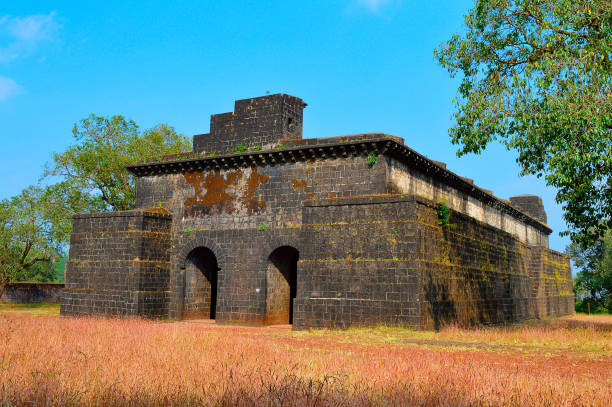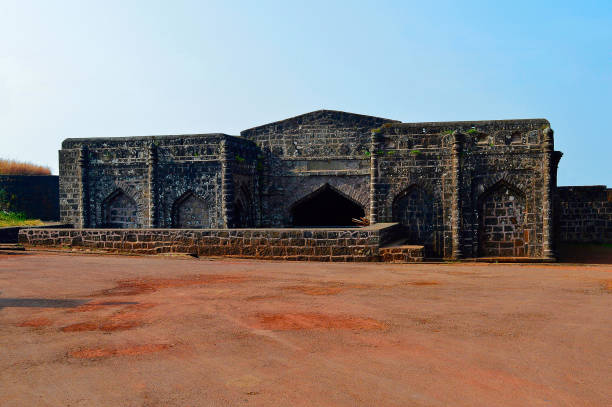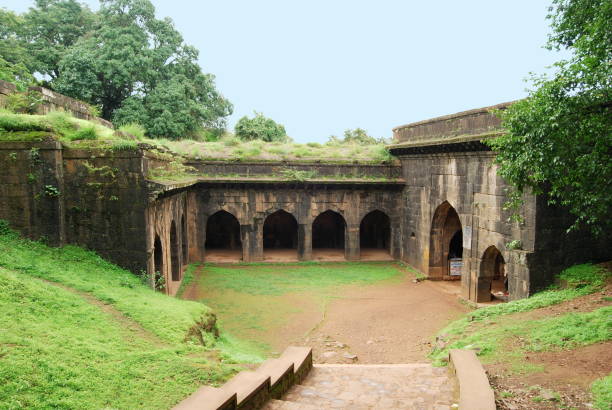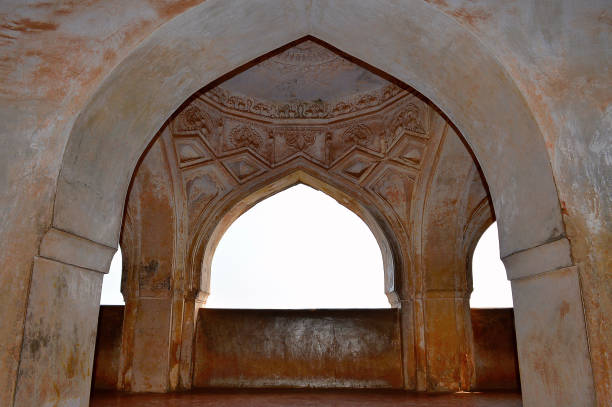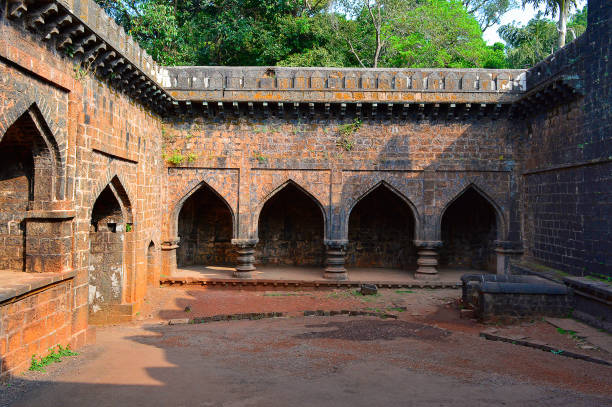
Panhala Fort
Panhala Fort, situated near Kolhapur in Maharashtra, is a significant historical and architectural landmark. It stands on a hill at an elevation of about 850 meters (2,800 feet) and has been a key site in the history of the Maratha Empire.
Location: Panhala is situated about 20 kilometers north of Kolhapur, at an altitude of around 850 meters (2,800 feet) above sea level.
Panhala Fort remains a symbol of Maratha heritage and a testament to the architectural and strategic ingenuity of its time. It’s a must-visit for history enthusiasts and those interested in exploring Maharashtra’s rich cultural heritage.
Historical Significance:
Panhala is a historical fort that commemorates Shivaji Maharaj, Siddhi Johar besieged Shivaji Maharaj's Panhal fort for four months, Shivaji Maharaj escaped from this siege on a rainy night and went to Vishalgarh, when Siddhi Johar chased him, Bajiprabhu Deshpande ambushed him at Pawankhind, so Shivaji Maharaj was able to reach Vishalgarh safely, but Bajiprabhu Deshpande collapsed and died.
In the same building there is another similar building called Sajjakoti, 1500 A.D. D. This building was built by Ibrahim Adil-Shah. Shivaji Maharaj and his son Sambhaji Maharaj were kept in this prison who escaped from here taking advantage of the right opportunity.
Even today, Shivaji Maharaj's existence is felt here. Not surprisingly, Rajgad, the capital of his Swarajya, Raigad and Shivneri where he spent his childhood, Panhala is a fort where Shivaji Maharaj had 500 residents. It was a Maratha kingdom with its capital from 1782 to 1827 during the British period. Inside this fort, Sambhaji temple, Someshwar temple, three gates, Raj Dindi etc. are
This fort is 20 km north of Kolhapur. Located at a distance, this fort falls within the Sahyadri mountain range, the fort is 400 m above ground level. Panhala fort is important in terms of martial arts, one of which plays an important role is Paschim Ghat, which is large and historic. After the Shilahara chief ruler Bhoja II (1178 – 1209), this empire was handed over to the Yadavas. It is an important place, the Bahamanis of Bidar; Mahmud Gawan who was a brilliant general attacked this fort in 1469 during the rainy season keeping his army far from the camp. Later in 16th century this fort was captured by Bijapur. Adil Shah made some ramparts and gates of this fort. After that in 1659, Shivaji Maharaj captured this fort, and stopped the repair work of the fort until it was fully established.
The fort was captured by Aurangzeb in 1701, and the fort was then handed over by the Mughal emperor to the British ruler, Sir William Manris. The fort was captured by the forces of Pant Amatya Ramachandra for a few months, which is explained in Swarajya dental books. In 1782, its administration was handed over to Kolhapur headquarters. The fort was captured by the British from the colonial rulers in 1844. It is 7 km from the headquarters of the fort. The length of this fort was extended to more than a triangular length. Large ramparts were built for the defense of the fort, with round openings in some places for observation. 5 – 9 m in remaining portion. Large fortifications, long round towers were built. The eastern gate called Char Darwaja, through which there is a way to enter the fort, was destroyed by the British.
On the left side of the entrance there are tank-like green and white dargahs. This path goes straight west for 400 m till the three gates. Goes on. This is a clever example of the military in the Adil Shahi style. The inner radius segment at the entrance represents the circular segment. Between the empty spaces of the nine khandas are the sub-khandas of the lines of the square khanda. Above these are the idols of Ganapati and other gods.
The side niches have an intricately carved maria wall with interlocking links and an elaborate leaf and branch motif. The bank wall of the foremost maria is visible above. Outside the western courtyard is a security room with pillars with triangular edges. The middle part of the two walls has an external entrance. Inscribed coins of Iran in inner triangular spaces by Ibrahim Adil Shah. A short distance to the west is a triple gate built into the interior of the fort.
About 1 km to the north until you reach the fort in the middle of the Panhala hill. This route is connected to The fort is surrounded by huge walls, now most of them are crumbling and some have fallen. There are three large square galleries, which are capable of protecting the entire temple and can stand freely. There are 16 large spaces, some 40m by 10m, covered by a roof with an upper 8m. A few steps lead to the outer roof. The east side of this building has a circular dome above the entrance.
The route is contiguous to Sajja Koti, 500m to the north, the stretch is pleasant.
Most of the constructions here are of Bijapur style.
Attractions:
1. Panhala Fort: The fort is a major attraction, with its grand gates, ancient walls, and several historic structures including the Teen Darwaza, the Sajja Kothi, and the Ambarkhana (granary).
2. Sajja Kothi: This is a large structure in the fort where Shivaji Maharaj is said to have held court and where he spent time during his stay.
3. Janani Masjid: A historic mosque built during the medieval period, reflecting the architectural style of that era.
4. Kalavantin Darwaza: Known for its impressive architecture, this gateway offers stunning views of the surrounding landscape.
5. Ambarkhana: The granary where supplies were stored, reflecting the fort’s strategic importance.
Natural Beauty:
1. Scenic Views: The hill station offers breathtaking views of the Western Ghats and lush green valleys. It’s a popular spot for nature lovers and photographers.
2. Waterfalls: During the monsoon season, several waterfalls around Panhala become active, adding to the region's natural charm.
3. Temples: There are several ancient temples around Panhala, including the Ambabai Temple, which attract pilgrims and tourists alike.
Climate:
- Monsoon: The monsoon season (June to September) brings heavy rainfall, transforming the landscape into a verdant paradise.
- Winter: Winter (November to February) is pleasant and cool, making it an ideal time to visit.
- Summer: Summers (March to May) can be relatively warm but still cooler compared to the lowland areas.
Accessibility:
- By Road: Panhala is accessible by road from Kolhapur, which is about 20 kilometers away. There are state transport buses and private taxis available.
- By Train: The nearest major railway station is Kolhapur, which connects to various cities in Maharashtra and beyond.
- By Air: The nearest airport is in Kolhapur, which is connected to major cities like Mumbai and Pune.
Accommodation:
- Hotels: There are various hotels and guesthouses in and around Panhala catering to different budgets. Options range from budget stays to more comfortable, mid-range accommodations.
Panhala is an ideal destination for those interested in history, nature, and a peaceful retreat from urban life.
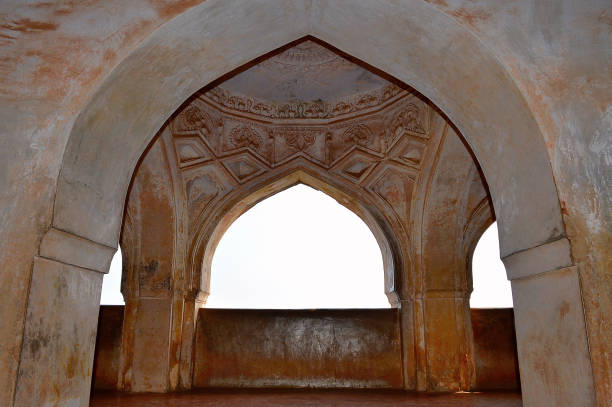
Sajja Koti
Inside Panhala Fort, there is a place called Sajja Koti. It was used as a prison and was an important defensive spot.
History: Within Panhala Fort, there is a part called Sajja Koti. This area of the fort has historical significance as it was used for various purposes, including as a prison and a strategic defense point. It was one of the key locations in the fort due to its strategic position.
Architecture: Panhala Fort, including Sajja Koti, features traditional Maratha architecture. The fort has walls, gates, and structures that reflect the design and defensive strategies of its time.
Scenery: The fort is on a hill and offers lovely views of the area around it. It’s a great place for those interested in history and nature.
In short, Sajja Koti is a notable part of Panhala Fort with historical importance and great views.
